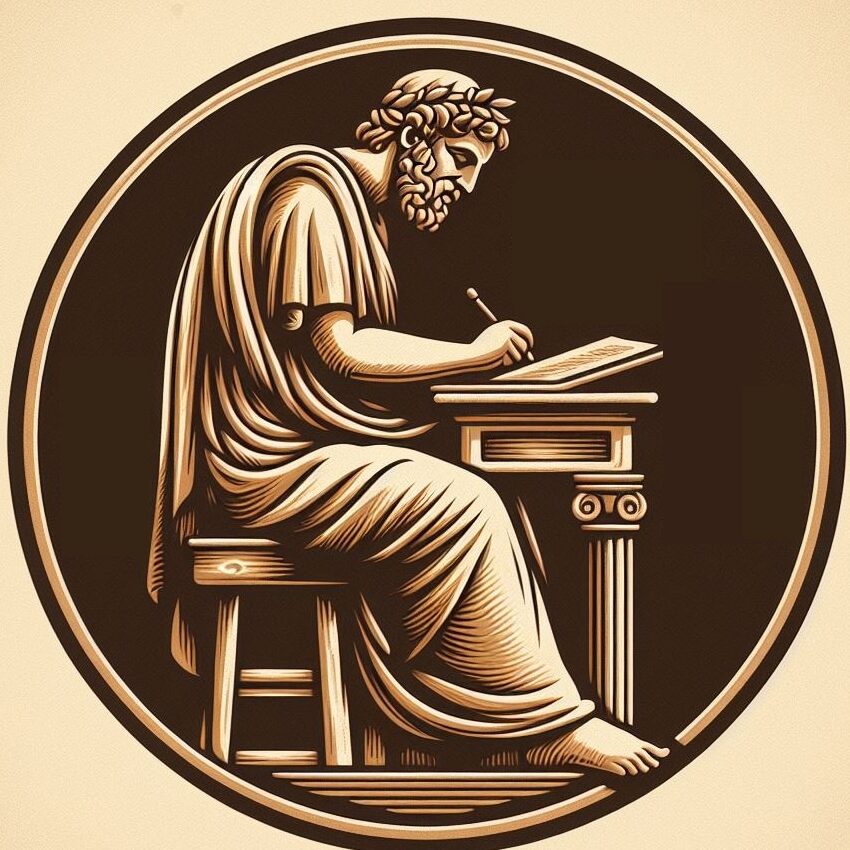In 1997, Michael Drosnin published his book The Bible Code. He claimed that the Torah contained hidden messages that predict the future. Drosnin based his work off the research of Israeli mathematician Eliyahu Rips. He claimed one can decipher secret messages in the Torah using Equidistant Letter Sequencing (ELS). An example of such a method would take every nth letter of a text. The string of letters uncoincidentally form words. For example, if you start with the first ת in Genesis and then take every 50th letter, you get the word תּוֹרָה (torah). Using the ELS method with the help of a computer, Drosnin claims that the encrypted messages contain prophecies about the future, including an apocalypse that would take place in 2006. Since its publication in 1997, Drosnin’s work has been debunked by mathematicians and linguists alike, not to mention history—his prediction of an apocalypse in 2006 never came to pass.
Many sensible people are wary of claims that the Bible has codes and hidden messages. They have good reasons to be skeptical. Most of these claims are bogus and sensationalist. However, the Bible and ancient Jewish and Christian literature do contain some codes and the earliest interpreters of the Bible would find obscure messages tied to numbers. An awareness of this method of writing and interpretation is not only fascinating but provides a window into the possibilities of interpretation of passages, especially in the prophetic and apocalyptic genres.
Gematria
Gematria is the interpretive technique of reading numbers as words or initials of words. More specifically, “Gematria is a numerological technique that consists of calculating the numerical value of a word or a phrase by adding up the values of all its letters, often in order to find or demonstrate the supposed relations between different words and concepts by proving the equivalence of their gematria values.”1 Both Greek and Hebrew letters were also used to represent a number, since they did not use Arabic numerals. The Greek letter alpha is one, beta is two, and so forth. Gematria, then, would take the numbers, make them into letters, and extrapolate further from them. But it was not only a way of interpreting a passage; authors can intentionally encode a message using numbers.
The early Christian writing The Epistle of Barnabas demonstrates how this was a valid way of reading the Bible. The Epistle of Barnabas was written around 70–150 AD by an unnamed author. For unknown reasons, the letter was later attributed to Barnabas, the companion of Paul. It contains an interpretation of the Greek translation of Genesis 14:14, which says “Abram, upon hearing that his kinsman Lot was taken prisoner, counted his own household members, three hundred and eighteen, and he pursued after them as far as Dan” (LES).2 The author of this letter interprets Genesis 14:14 in the following manner:3
Learn fully, then, children of love, on all points that [because] Abraham, who first instituted circumcision, did it looking forward in spirit to Jesus, for he received the doctrines [implicit in]14 three letters. 8 For it says: ‘And Abraham, circumcised from his household eighteen men and three hundred.’ What, then, was the special knowledge taught him? Notice that he first mentions eighteen, and, after a pause, three hundred. Eighteen is I, and H—you have Jesus (IH)—and, because the cross in the T was to have grace, he says ‘and three hundred’ (T). So he indicates Jesus in the two letters and the cross in the other. (Ep. Bar. 9.7–8)
For the number 318, the Greek letters were tau (T = 300), iota (I = 10), and eta (H = 8). The letters representing 10 and 8 (iota and eta) are the first two letters of Jesus’ name (ΙΗΣΟΥΣ). And the first letter representing 300 (T), is in the shape of a cross. What to most of us is a seemingly random number of servants to de-foreskin, ‘Barnabas’ says are about Jesus and the cross.
So, then, we can observe that this early Christian had a very fanciful way of interpreting the numbers in the Bible to apply them to Jesus. But sometimes exegetes do not just fabricate these ‘codes’: biblical authors intentionally use numbers as a code. As mentioned above, both the method of interpretation and of encoding messages in numbers is called gematria. To give an example of the latter type of gematria, the Christian Sibylline Oracles uses gematria to write an encrypted prophecy about Jesus: 4
- Then indeed the son of the great God will come,
- incarnate, likened to mortal men on earth,
- bearing four vowels, and the consonants in him are two.
- I will state explicitly the entire number for you.
- For eight units, and equal number of tens in addition to these,
- and eight hundreds will reveal the name… (Sib. Or. 1.324–29)
Jesus’ name has two consonants, the letter sigma (ΙΗΣΟΥΣ) and the other four letters are vowels. The number given in the last two lines of the Sibylline Oraclestotals to 888, which amazingly is the numeric equivalent of Jesus’ name!5
The most famous proposal of a biblical passage using gematria is none other than the number of the beast, 666, in Revelation 13:18. Some have noticed that the Greek name “Nero Caesar” in Hebrew letters (נרון קסר) comes out to 666. The motivations for trying to find Nero’s name help solidify the evidence for the early date of Revelation. However, there are several other ways to take the number 666 rather than as representing the numerical equivalent of a name.
Another proposed case of gematria in the New Testament is the number of fish mentioned in John 21:11. The narrator notes that the catch of fish was 153 fish. Speculation on the significance of this number has abounded at least since Origen of Alexandria’s proposition that the 153 fish represent the total number of the nations caught in the net of the gospel. Richard Bauckham agrees with this interpretation in that the number symbolizes the children of God.6 Others such as Kenneth Cardwell create a complex argument combining gematria with isopsephy and triangular numbers to the conclusion that the 153 and the abbreviated name of Jesus would have come out to saying that Jesus is the Eighth Day.7 While this may seem absurd, one ought to ask why John gives the details of the exact amount of fish caught. One should not hastily say that he is merely recording a historical fact given that the Gospel of John contains many double entendres and symbolism.
Atbash
Biblical authors also encoded meanings through an atbash cipher. The atbash (אתבשׁ) is a cipher where the code is written by swapping the letter for the corresponding letter on the other half of the alphabet. In English, the atbash cipher would have A=Z, B=Y, C=X and so forth. The best-known example of the use of atbash is in Jeremiah 25:26 and 51:41 where he speaks of the king of Sheshach (שֵׁשַׁךְ). Sheshach is not a name for any known place. Rather it is an atbash for Babel (בבל).
Another possible use of an Atbash-like cryptogram is the name Gog of Magog in Ezekiel 38:2. Margaret Odell in her commentary on Ezekiel reports that God of Magog (גג מגג) uses a cipher that substitutes the next letter in the alphabet for the previous one and then is reversed.8 In this case, the letter beth would substitute for gimmel and the letter mem would stand in place of lamed, making the letter sequence בב לבב, and Magog would thus be “Babel” spelled backward in this code.
Why would biblical authors write in codes? To fully answer this question, we have to understand the purpose and value of esoteric communication. Esoteric communication is only intended for those ‘in the know’ and the message eludes those outside this special group. Jesus’ parables are a perfect example of esoteric communication (see Mark 4:10–12). To thoroughly explain the purposes and usefulness of esoteric communication is beyond the scope of this essay, but I will give two brief remarks.9 Esoteric communication protects the communicator by concealing her message from her opponents who might be offended by the message or use it against herself. This is likely Jeremiah’s purpose of using the atbash method to conceal the name Babel—authorities usually do not appreciate it when you prophesy their downfall! Another advantage of esoteric communication is that it rewards the inner crowd for being ‘in the know’ and paying attention. It takes work and attentiveness to understand hidden messages. It provides a satisfaction similar to that which we receive after solving a puzzle—the amount of satisfaction we get is commensurate with the effort it takes to solve.
Can and should we still try to read the Bible this way? Certainly. However, the amount of time and attention to detail it takes to discover hidden messages. Additionally, we must keep in mind specific parameters for our interpretations in order not to fall into excessive speculation. First, the more complex your method is which you use to arrive at a meaningful interpretation, the less likely your interpretation is true. It is one thing to say that a number has the same numeric equivalent of a person’s name. It is another thing to argue from number symbolism based on reading the numbers backward and subtracting 13 from the total amount and saying that it arrives at a person’s name. Second, realize that millions have studied and read the Bible. The likelihood of finding a gematria or atbash that nobody else has discovered is highly unlikely. That being said, it is not impossible.
- Gideon Bohak, “Gematria,” Eerdmans Dictionary of Early Judaism 161. ↩︎
- If you know Greek and read the Septuagint passage, you will see that it spells out the numbers rather than giving the symbols. However, looking at the apparatus criticus of the Göttingen Septuagint volume on Genesis, you will see that there are a number of manuscripts that read τ̅ι̅η̅. ↩︎
- Francis X. Glimm, Joseph Marique, and Gerald G. Walsh, trans. The Apostolic Fathers, vol. 1 of The Fathers of the Church (Washinton, DC: Catholic University of America, 1947). ↩︎
- OTP 1:342 ↩︎
- Ι = 10, Η = 8, Σ = 200, Ο = 70, Υ = 400, Σ = 200 which all totals to 888. ↩︎
- Richard Bauckham, “The 153 Fish and the Unity of the Fourth Gospel” Neotestamentica 36.1 (2002): 77–88. ↩︎
- Kenneth William Cardwell, “Another Fish on the Fire: John 21:9, 11,” CBQ 82.4 (2020): 628–48. ↩︎
- Margaret S. Odell, Ezekiel, SHBC (Macon, GA; Smyth & Helwys, 2005), 470. ↩︎
- I also highly encourage you to read Arthur Melzer, “On the Pedagogical Motive for Esoteric Writing,” The Journal of Politics 69.4 (2007): 1015–31. ↩︎

